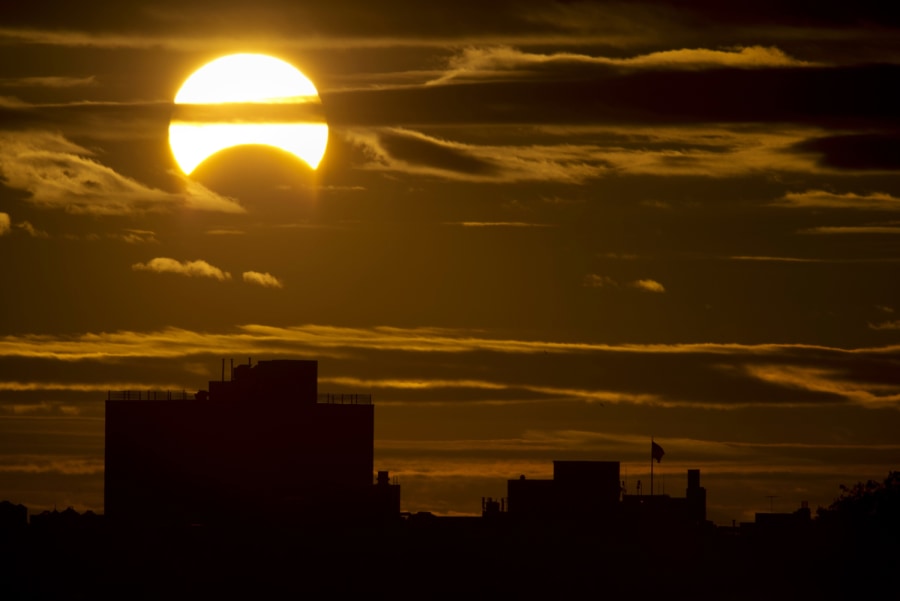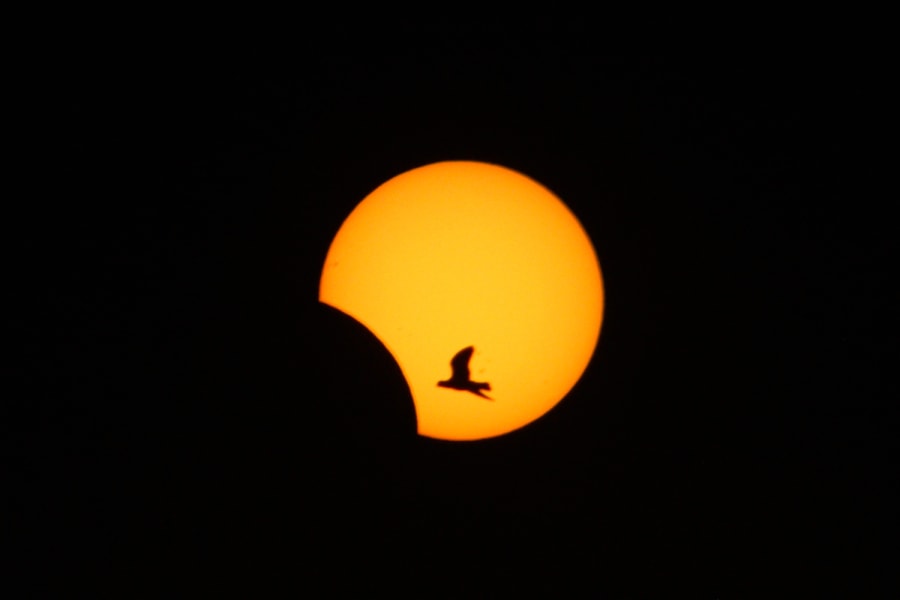Science
Related: About this forumTotal, Annular, and Hybrid Eclipses
I was trying to explain hybrid eclipses to a friend earlier and came up with something like this. It was difficult to do this without having anything to draw on!
When a large light source (the sun) shines on a smaller object (the moon), the central shadow behind the moon is cone-shaped. An observer inside the cone will see the moon completely cover the sun, but an observer beyond the tip of the cone will be able to see the sun around the moon, because the moon will no longer appear big enough to cover the sun.
The distances between the sun, the earth, and the moon are not constant, but vary slightly over time. The shadow cone will be slightly longer when the earth and moon are farther from the sun. Additionally, when the moon is close to the earth, the shadow cone will have less distance it needs to cover to reach the earth.
So, when the moon is closer to the earth and/or the earth farther from the sun, the shadow cone reaches the earth with plenty of distance to spare. Observers on the earth inside the cone will see a total eclipse when it passes them. Conversely, when the moon is farther from the earth and/or the earth closer to the sun, the shadow is too short to reach the earth. Observers in the locations at which the shadow cone is pointing will see an annular eclipse instead.
Now, because of the size of the earth, an observer in a location where it is local solar noon may be up to four thousand miles (the radius of the earth) closer to the sun than an observer where the sun is rising or setting, depending on his latitude. If it just so happens that the shadow cone is the right length that those four thousand miles make the difference between the shadow cone reaching the earth or not, then the shadow will touch the noontime observer but not the sunrise/sunset observer, because the former is closer to the moon than the latter. Then we have a hybrid eclipse: the noontime observer gets a total, the sunrise/sunset observer gets an annular.
Another way to look at it is that the noontime observer is closer than the sunrise/sunset observer to the moon by approximately 1 part in 60, but closer to the sun by only about one part in 23,000, because of the much larger distance to the sun. Thus, an observer who moves from the sunrise location to the noon location will see the moon's apparent size increase by a greater degree than the sun's. If that small amount is what makes the difference between the moon completely covering the sun and not, then we have the hybrid eclipse described above.
WillyT
(72,631 posts)Coyotl
(15,262 posts)I rec this read:
Eclipses, Cosmic Clockwork of the Ancients
http://jqjacobs.net/astro/eclipse.html


